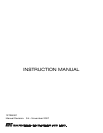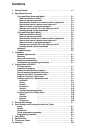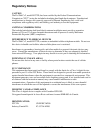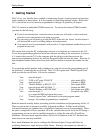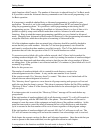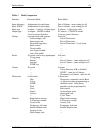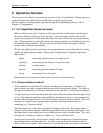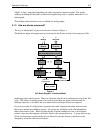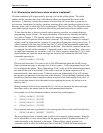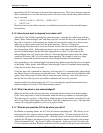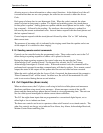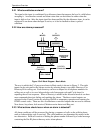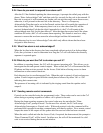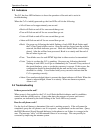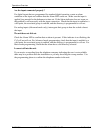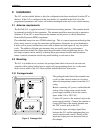
Operations Overview 2-3
B1272M001
BARNETT ENGINEERING LTD. ProTalk Cv2
2.1.4 What actions should occur when an alarm is detected?
All alarm conditions will be processed by placing a call on the cellular phone. The called
number and the activities that occur with different alarms are determined by entries in the
directories. A directory contains the sequence of actions that will occur when a group has an
active alarm. Instructions for dialing, speaking, inserting delays and signaling are placed in the
directory in the order in which they are to be performed. There are a total of six directories; each
can contain a unique sequence of activities that will be performed when alarm conditions exist.
To best describe how a directory controls alarm reporting activities, an example directory
programming session follows. For more information on the directory summary and dialog
box, refer to Chapter 3. The opening window for a directory displays a summary of the
activities that it will perform when an alarm is detected. The directory summary is arranged
as lines; each line represents the sequence of events that will take place during one call out. If
a Dial command is the first entry on the line, the Cv2 will call the programmed number and
then execute the remainder of the commands on that line. After the last command on the line
is competed, the call will be terminated. Commands such as Auto Ack and Wait, when used
as single line commands, do not initiate a call. For a basic sequence where the Cv2 is to call a
phone number and speak the alarm message, the directory line contains the Dial and Voice
commands appearing as:
1. [DIAL]2458829 [VOICE]
This line will cause the Cv2 to place a call to 245-8829 and then speak the Site ID, Group
Name and alarm message, or messages, for all active points. Unless programmed not to, the
Cv2 will append the phrase “Enter Acknowledge Code” at the end of the alarm announcement
and wait for the code to be returned. If the code is received, the alarm sequence will be
terminated until a new alarm occurs. Failure to receive an Acknowledge Code will advance
the sequence of operations to the next line in the directory. If the commands contained in the
last directory line have been completed without reception of an Acknowledge Code, the Cv2
waits for the time interval set in the timers before repeating the process by starting over at
directory line 1.
During execution of the Voice command, the Cv2 will try to announce the alarm messages
three times with a one minute limit for the total announcement duration.
For example, to call four telephone numbers, the directory would appear as:
1. [DIAL]2458829 [VOICE]
2. [DIAL]2336700 [VOICE]
3. [DIAL]9842121 [VOICE]
4. [DIAL]9843316 [VOICE]
If you want an alert tone to precede the voice message the directory line would look like this:
1. [DIAL]2458829 [ALERT] [VOICE]
The next example shows a sequence that is used to call a numeric paging terminal. After the
call is placed there is a four second delay for the paging terminal to respond before the Cv2
sends the number to be displayed on the pager. When calling a paging terminal, it is
sometimes useful to allow the called party time to call the Cv2 back and acknowledge the



